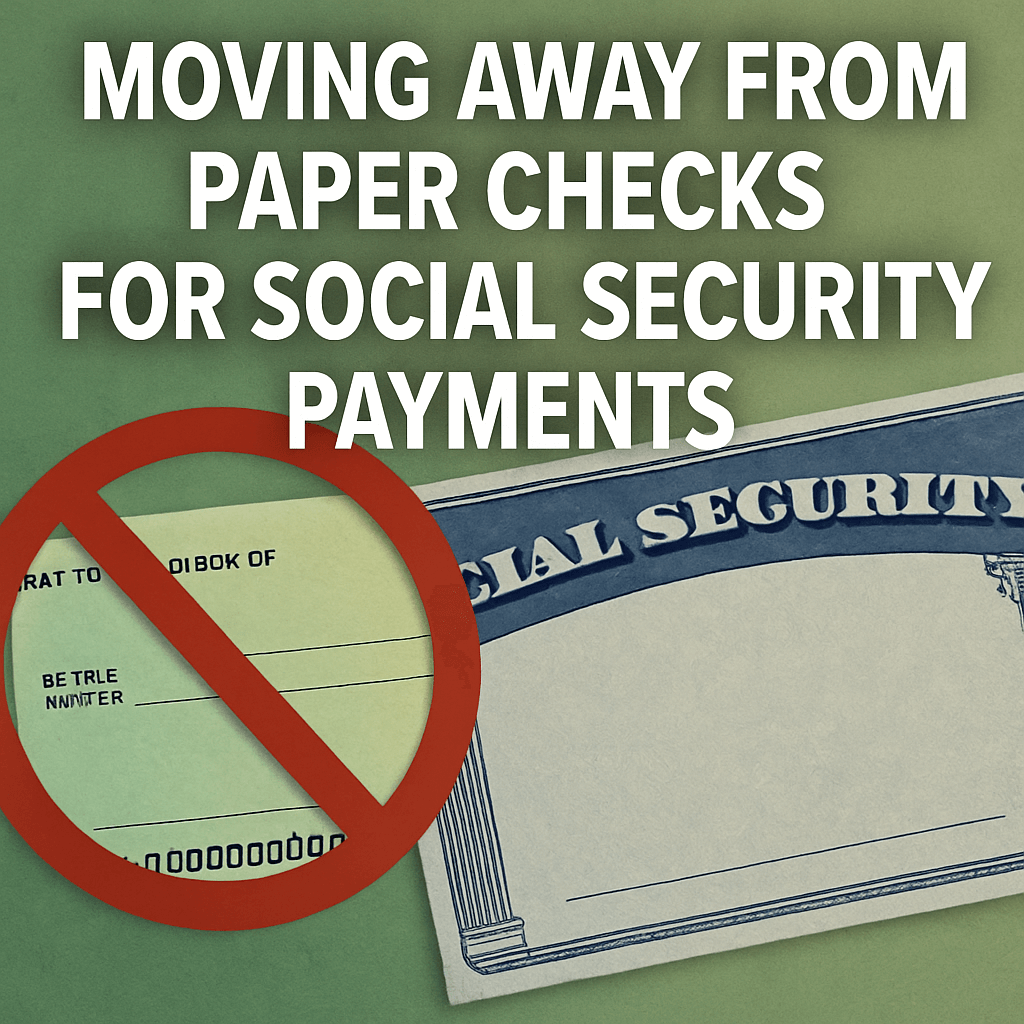Moving Away from Paper Checks for Social Security Payments

In less than four months, the federal government plans to discontinue the use of paper checks for all monetary disbursements, including tax refunds and Social Security benefits. This decision comes in the wake of an executive order signed by former President Donald Trump aimed at transitioning nearly all federal payments to electronic funds transfer (EFT) methods.
The Shift to Electronic Funds Transfer
Experts largely agree that abolishing paper checks enhances security. Statistics reveal that the vast majority of Social Security recipients—over 68 million or more than 99%—have already transitioned to direct deposit. However, the approximately 485,000 individuals who continue to receive their benefits via paper checks may face a plethora of challenges as the government pushes for this significant change.
Understanding the Risks of Paper Checks
- Check Fraud: The prevalence of check washing scams, which involve criminals erasing original check information and substituting new details, has seen a sharp rise. Social Security checks are particularly vulnerable given their predictable delivery schedule. According to Haywood Talcove, CEO of LexisNexis Risk Solutions Government, this predictability makes it easier for criminals to plan thefts, often targeting mailboxes as delivery times are consistent each month.
- Delay in Resolving Fraud: One of the few drawbacks of checks is the delay in fund clearance. Victims often take days to realize their checks have been altered or stolen, complicating recovery efforts. A recent report from the Federal Reserve indicates that check fraud now stands as the second most reported form of attempted fraud, accounting for 30% of all fraud-related losses in the United States.
Scams Beyond the Shadows
Scams are not solely the work of strangers; they can be perpetrated by insiders as well. For instance, earlier this year, a former U.S. Postal Service employee was sentenced for stealing nearly 100 checks totaling $1.6 million. Additionally, two postal workers were charged last summer with stealing U.S. Treasury checks worth over $4 million. These incidents underline the vulnerabilities embedded within the paper check system.
Challenges for Social Security Recipients
While the majority are already utilizing direct deposit, the minority of recipients—often older individuals, the unbanked, or those lacking reliable internet access—face steep hurdles in making this transition. These groups are among the most vulnerable in society and may lack the necessary resources to navigate the shift.
- Financial Inclusion: The Trump administration has indicated that exceptions will be made for “people without banking or electronic payment access” and “certain emergency payments.” However, the logistics of implementing this policy remain unclear.
- Organizational Complications: Recent personnel cuts and office closures stemming from initiatives under the Trump administration’s Department of Government Efficiency could impede the Social Security Administration (SSA) in assisting beneficiaries during this transition.
Expert Recommendations for Transitioning
Talcove encourages those still receiving paper checks to sign up for USPS Informed Delivery, a service that alerts recipients about their incoming mail items. This can serve as a safeguard, allowing them to check for the arrival of checks immediately and potentially thwart any theft attempts. Additionally, Talcove advises setting up bank alerts for any deposits or withdrawals to swiftly catch any fraudulent activities.
Conclusion
While the transition to electronic funds transfer could ultimately lead to safer disbursements, it introduces complexities that may adversely impact vulnerable Social Security recipients. The need for robust communication and support becomes critical during this change. Awareness and preparation can alleviate potential challenges for the few who remain reliant on paper checks, thus ensuring financial security for all.
Note: As the government moves forward with this transition, continuous updates and support channels will likely play a crucial role in assisting those affected.